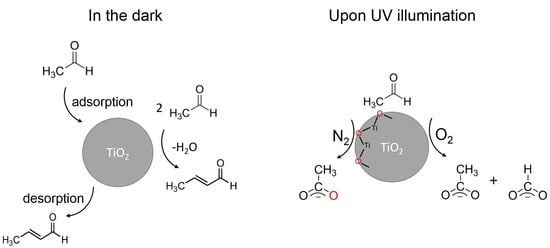Effect of H2O and O2 on the Adsorption and Degradation of Acetaldehyde on Anatase Surfaces—An In Situ ATR-FTIR Study
Abstract
Share and Cite
Melchers, S.; Schneider, J.; Emeline, A.V.; Bahnemann, D.W. Effect of H2O and O2 on the Adsorption and Degradation of Acetaldehyde on Anatase Surfaces—An In Situ ATR-FTIR Study. Catalysts 2018, 8, 417. https://doi.org/10.3390/catal8100417
Melchers S, Schneider J, Emeline AV, Bahnemann DW. Effect of H2O and O2 on the Adsorption and Degradation of Acetaldehyde on Anatase Surfaces—An In Situ ATR-FTIR Study. Catalysts. 2018; 8(10):417. https://doi.org/10.3390/catal8100417
Chicago/Turabian StyleMelchers, Stephanie, Jenny Schneider, Alexei V. Emeline, and Detlef W. Bahnemann. 2018. "Effect of H2O and O2 on the Adsorption and Degradation of Acetaldehyde on Anatase Surfaces—An In Situ ATR-FTIR Study" Catalysts 8, no. 10: 417. https://doi.org/10.3390/catal8100417
APA StyleMelchers, S., Schneider, J., Emeline, A. V., & Bahnemann, D. W. (2018). Effect of H2O and O2 on the Adsorption and Degradation of Acetaldehyde on Anatase Surfaces—An In Situ ATR-FTIR Study. Catalysts, 8(10), 417. https://doi.org/10.3390/catal8100417







